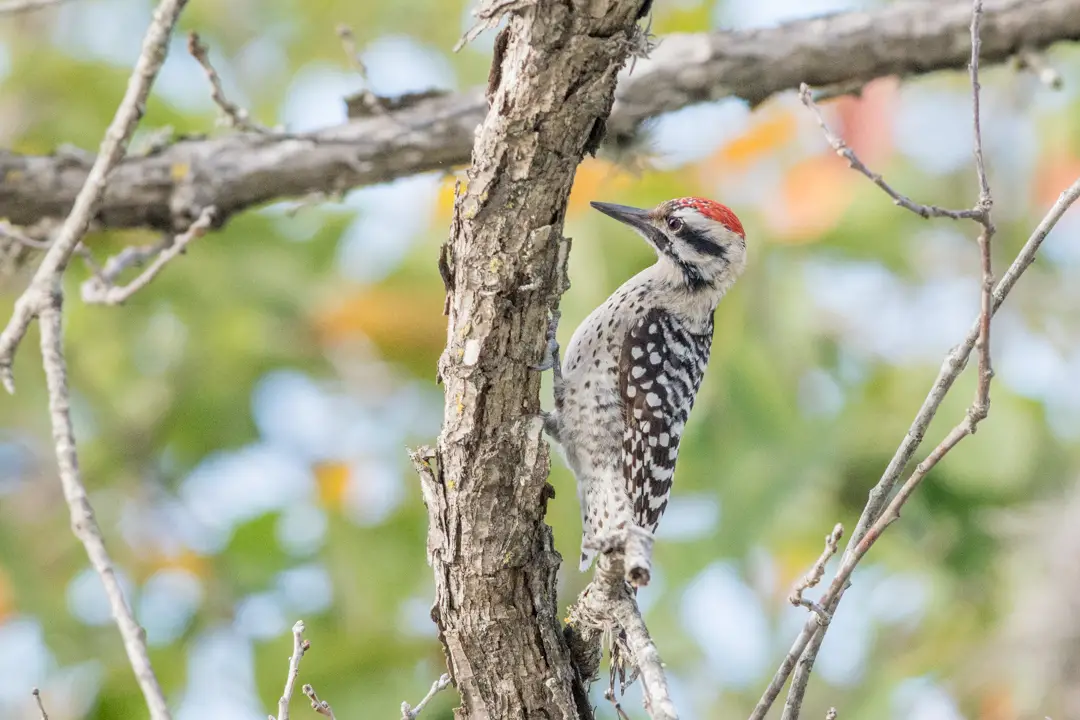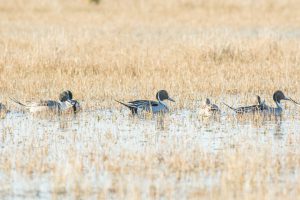Texas officially has 16 documented species of woodpeckers.
One is rare for Texas (Red-naped Sapsucker), one is federally endangered (Red-cockaded Woodpecker), and one is extinct (Ivory-billed Woodpecker), but most others are regulars in backyards and local parks.
The largest woodpecker in Texas is the Pileated Woodpecker, with a wingspan of 2.5 feet.
The smallest woodpecker in Texas is the Downy Woodpecker, with a wingspan of 11 inches.
Woodpecker Species in Texas Include:
- Golden-fronted Woodpecker
- Red-bellied Woodpecker
- Downy Woodpecker
- Ladder-backed Woodpecker
- Northern Flicker
- Hairy Woodpecker
- Pileated Woodpecker
- Red-headed Woodpecker
- Acorn Woodpecker
- Yellow-bellied Sapsucker
- Red-naped Sapsucker
- Williamson’s Sapsuckers
- Red-cockaded Woodpecker
- Lewis’s Woodpecker
- Red-breasted Sapsucker
- Ivory-billed Woodpecker
Select a woodpecker on the list above to see where they live and how to tell them apart.
Golden-fronted Woodpecker
Clues for Identifying:
- Yellow-orange on back of neck
- Red on top of head (males only)
- Medium-large woodpecker
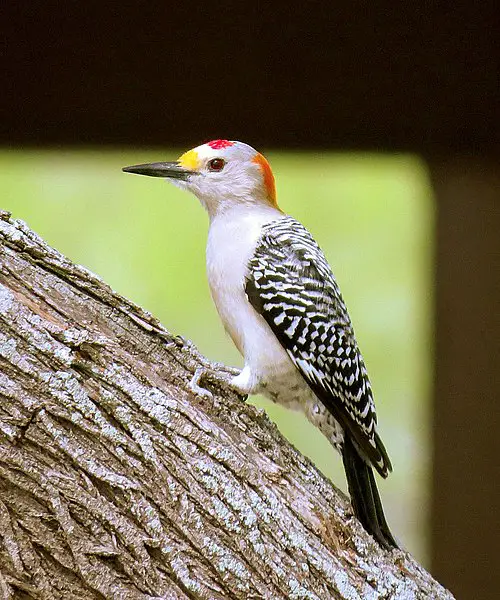
One of the most common woodpeckers in the western half of the state, the Golden-fronted Woodpecker loves big trees like oaks, pecans, and even large mesquites. They’re often vocal, making them easy to find in local parks.
The best way to attract them to your yard is with suet, which is true for most Texas woodpeckers.
Their range includes south and central Texas, and up through the panhandle. They’re also present in west Texas, especially the Big Bend region.
Golden-fronted Woodpeckers overlap in range with Red-bellied Woodpeckers east of San Antonio, in Austin, west of Waco and Fort Worth, and in Wichita Falls. If you’re near these areas be sure to visually separate the two species.
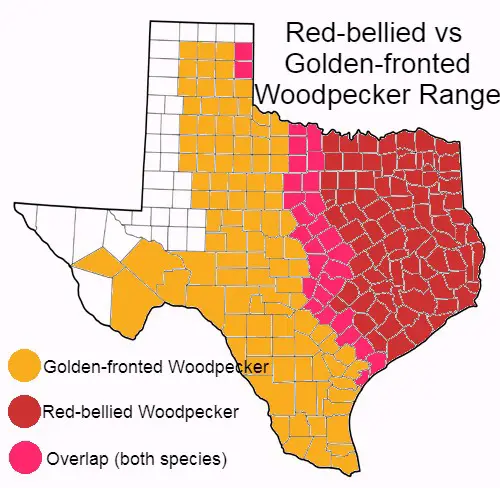
Red-bellied Woodpecker
Clues for Identifying:
- Solid red on back of neck
- Red on top of head (males only)
- Medium-large woodpecker
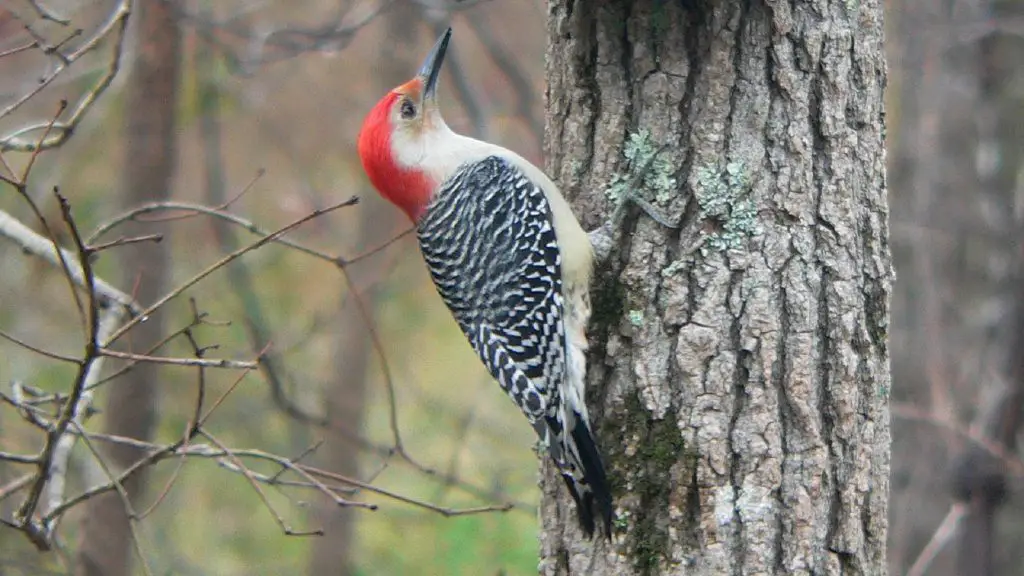
Red-bellied Woodpeckers are common in the eastern half of the state. They love wooded areas with large hardwoods, especially near creek and river drainages. But you can also find them in neighborhoods and local parks, as long as large trees are nearby.
To identify, look for the bold red on the back of their necks and top of head. Males have solid red on the top of the head, like a cap or helmet. Females still have red necks, but the very top of the head is pale with no color.
Downy Woodpecker
Clues for Identifying:
- Very small woodpecker
- Obvious white vertical patch on the back
- Spot of red on back of head (males only)
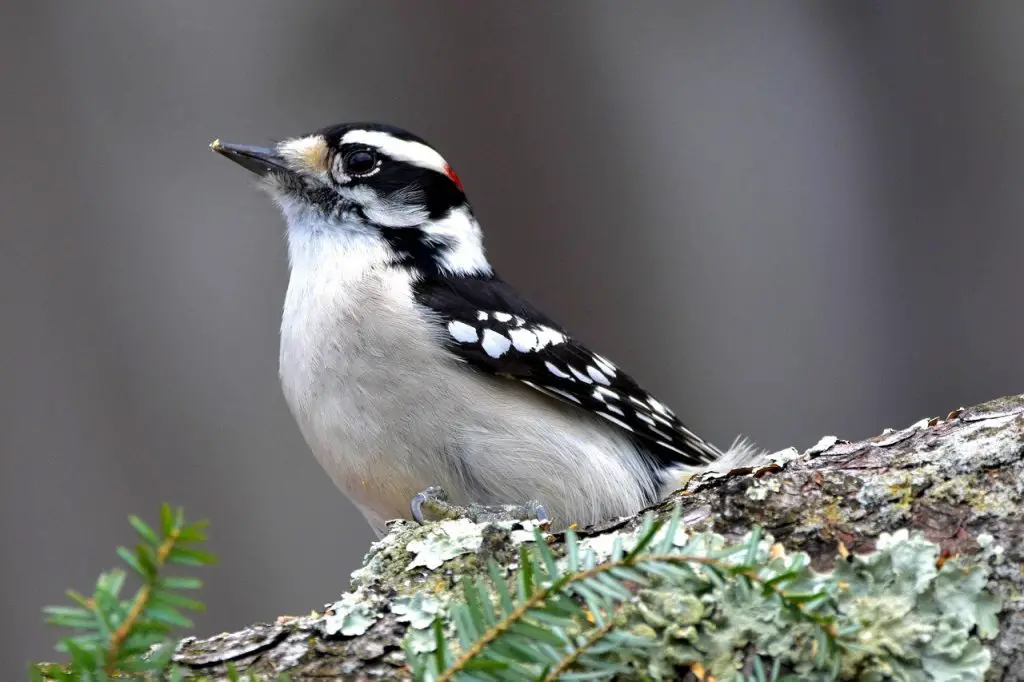
The Downy Woodpecker is the smallest woodpecker in Texas.
They’re a common species and backyard visitor in the eastern half of Texas, and will come to suet feeders if enough tree cover is nearby.
The easiest way to identify these little guys is their white “backpack”, a rectangular patch of white on the center of their backs. Hairy Woodpeckers also have white back patches, but are much less common than the Downy Woodpecker.
Sometimes Downy Woodpeckers can be seen on large trees, but they will also forage on tiny limbs and twigs, and sometimes in woody vines near the ground.
Hairy Woodpecker
Clues for Identifying:
- Small-medium sized woodpecker
- White vertical patch on the back
- Bill is longer and heavier than a Downy Woodpecker
- Generally restricted to far eastern portions of Texas
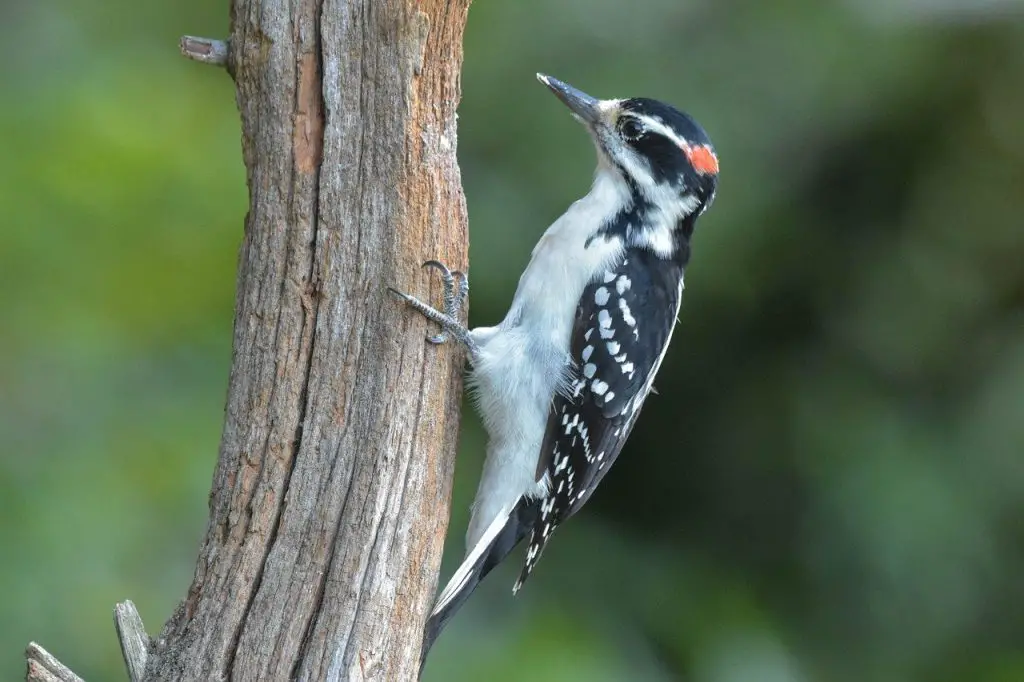
Hairy Woodpeckers are similar in appearance to Downy Woodpeckers, but are more restricted to the eastern areas of the state. The are frequently seen from north Houston up to Dallas, and on up through Oklahoma.
The main difference of Hairy Woodpeckers from the Downy Woodpecker is the Hairy’s longer, more robust bill.
Also, if you get a good look at the tail, the outermost tail feathers along the edge will be completely white. Outer tail feathers on a Downy will show several tiny black spots.
Ladder-backed Woodpecker
Clues for Identifying:
- Small-medium sized woodpecker
- Black and white barring all the way down the back
- Two bold facial stripes, one behind the eye and one behind the bill.
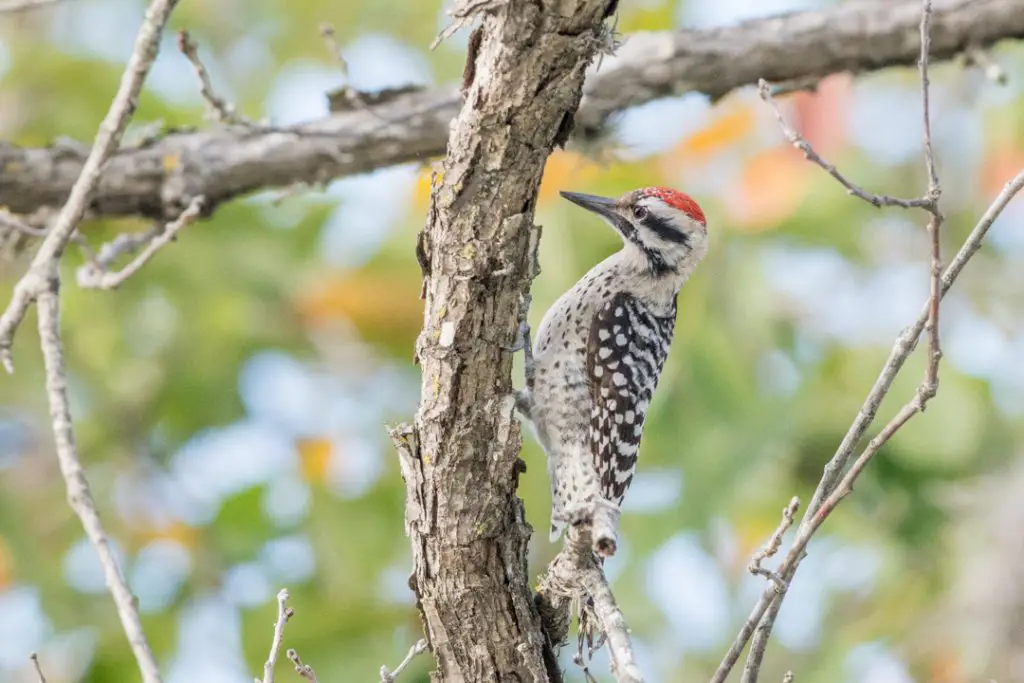
The Ladder-backed Woodpecker might just be the most numerous woodpecker in Texas. It’s range includes the western two-thirds of the state, with it’s eastern boundary falling roughly on Fort Worth, Austin, and Victoria.
Ladder-backed Woodpeckers can do well with a variety of habitats, from more traditional woodlands with large trees like oaks and pecans, to dry shrubby areas where mesquite is common.
Dead trees also make great woodpecker attractors for this species, perfect for finding insects and drilling nesting cavities.
Males show a red cap on the of the head, while females lack the color for better camouflage.
Northern Flicker
Clues for Identifying:
- Large woodpecker
- Gray head with a pink-brown face
- Often seen foraging on the ground

This species can been seen all over Texas, but is more common in the northern half. It’s a migratory species that’s here in the winter but gone in the summer.
Northern Flickers the woodpecker that’s sometimes seen foraging on the ground for insects and worms, especially in damp soil with short grass. Multiple individuals may gather in one spot to feed.
Flickers are the second largest woodpecker in Texas, behind the Pileated Woodpecker.
Pileated Woodpecker
Clues for Identifying:
- Very large woodpecker
- Bright red “mohawk” on top of head
- Solid black body
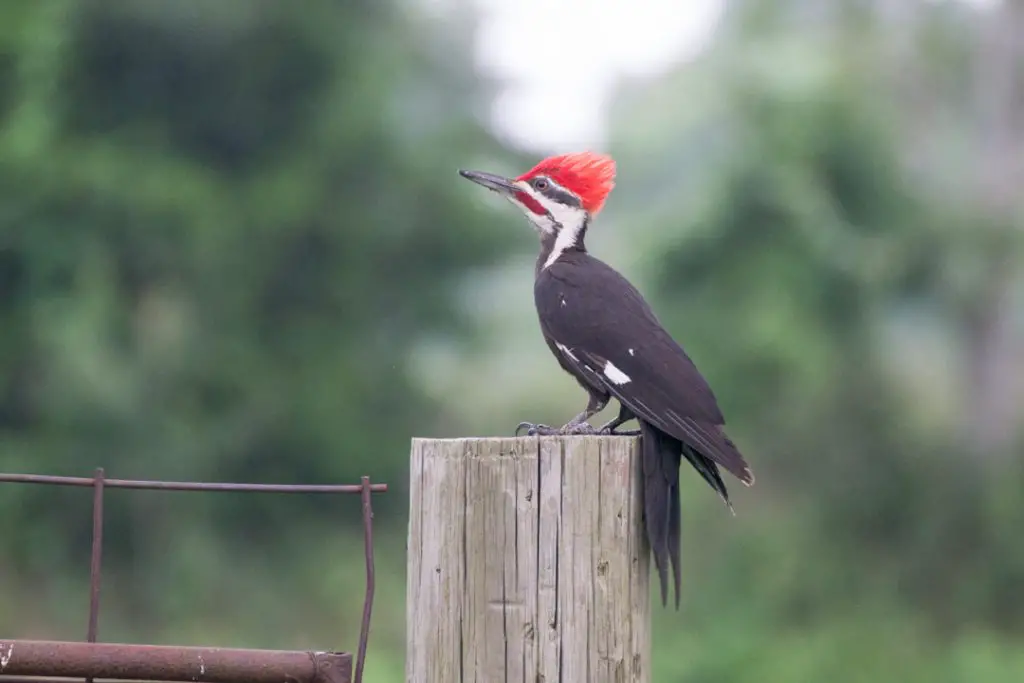
The Pileated Woodpecker is the largest woodpecker in Texas.
Always an exciting sight, the huge Pileated Woodpecker is a resident of expansive hardwood forests. Their powerful muscles and large bill are capable of drilling sizable gashes into the sides of trees, and their loud, wild call can sometimes be heard from a quarter mile away.
Uncommon to regular in the eastern third of the state, they’re often seen in the greater Houston area, north and east of Dallas, the Texas Piney Woods, and around Bastrop east of Austin. Occasionally they’ll visit suet feeders in backyards.
Up close their bright red mohawks and large size gives them away. In flight, large white wing patches are a big clue to their identity.
Red-headed Woodpecker
Clues for Identifying:
- Solid bright red head
- Clean white breast and belly
- Black wings with large white patch on the lower back

Not to be confused with the more common Red-bellied Woodpecker, the Red-headed woodpecker is a stunning sight in east and north Texas. The iridescent red head feathers shine brightly when the sunlight hits them.
These uncommon woodpeckers need expansive hardwood forests to do well. They can be found north and east of Houston, north and east of Dallas, and sometimes in the eastern panhandle. Occasionally individuals will show up in more central locations like Bastrop and northeast of Austin.
Acorn Woodpecker
Clues for Identifying:
- Only found in far west Texas
- Clownish face with black and pale yellow
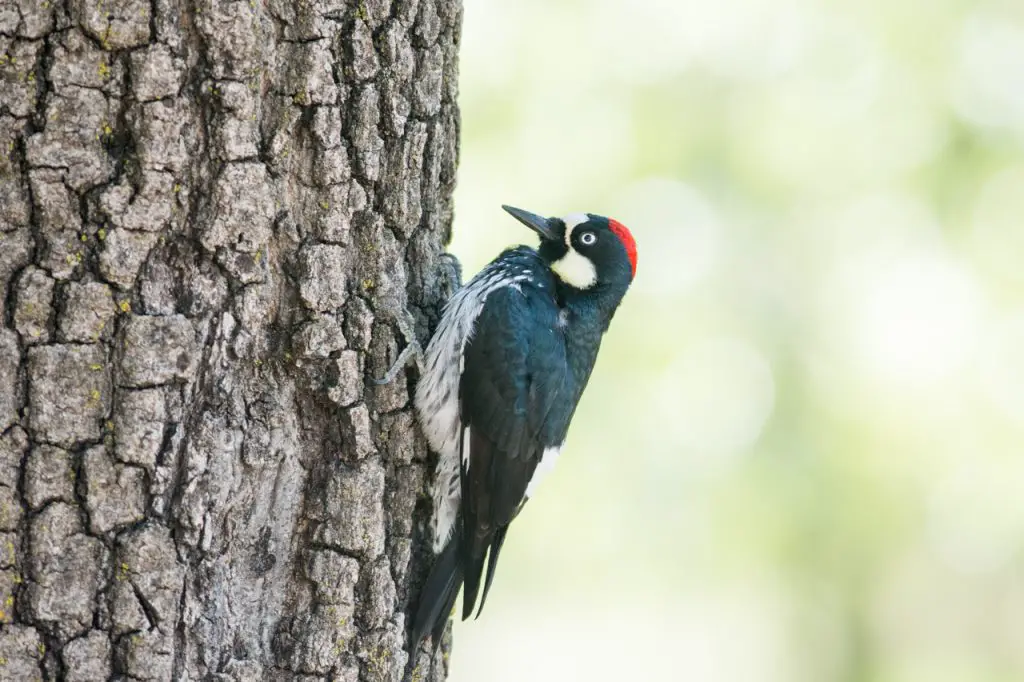
In Texas, Acorn Woodpeckers can only be reliably found near western mountain ranges like the Chisos Mountains in Big Bend, the Davis Mountains, and the Guadalupe Mountains along the New Mexico state line.
They are known for their obsessive behavior of caching acorns in dead tree trunks and wooden telephone poles. Often vocal and social, watching groups of them work acorns trees together is an entertaining and interesting experience.
Yellow-bellied Sapsucker
Clues for Identifying:
- Red on forehead
- Black wings
- Messy white spotting down the back
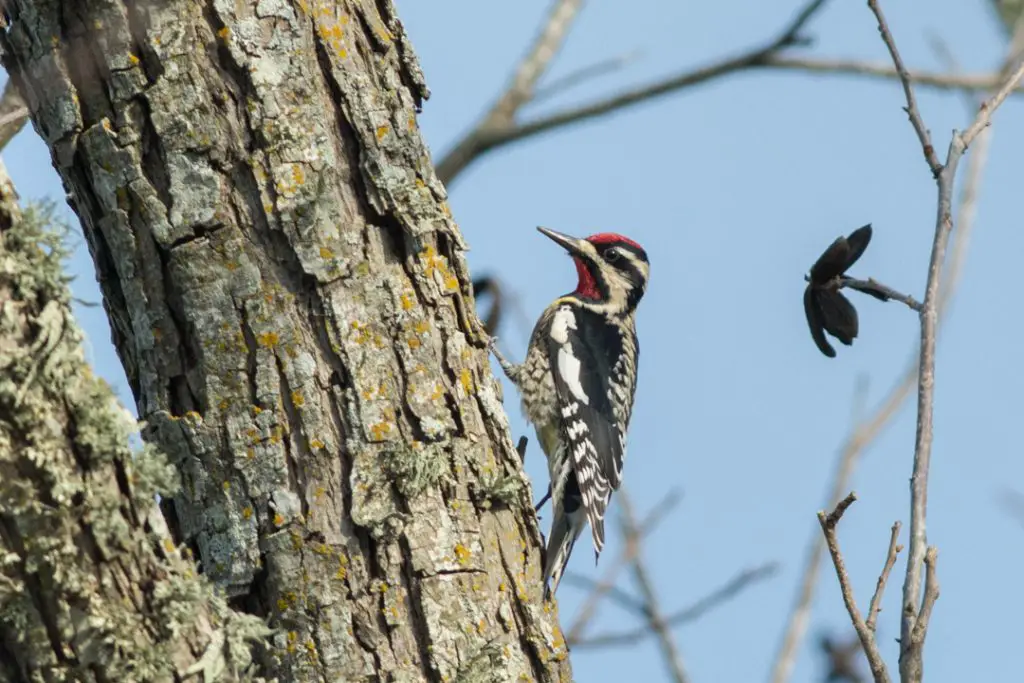
Yellow-bellied Sapsuckers are usually seen clinging to the wide central trunks of large trees. Often silent, they inconspicuously work their way up trees searching for insects to eat, as if sneaking and trying not to be seen.
This species is by far the most commonly seen and well known sapsucker species in the state, although it’s only one of four. It can potentially be seen almost anywhere in the state, but is common in the eastern half to eastern third.
Sapsuckers are migratory, only present in Texas during the winter.
Sapsuckers are known for leaving horizontal rows of small holes in the trees. They drill into the tree past the bark and then fly away until later. Once the holes become filled with tree sap, the sapsucker will return and use their long tongue to eat the sap from the holes it created.
Red-naped Sapsucker
Clues for Identifying:
- Lacks black border on lower cheek separating red and white colors
- Males have red on the nape, or back of neck
- Females have small white chin patch just under the bill
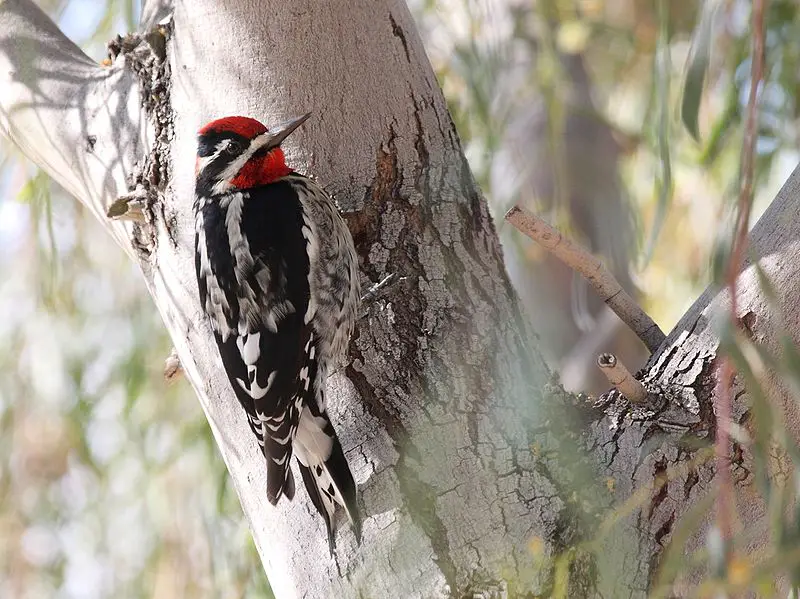
Similar in appearance to the Yellow-bellied Sapsucker, this western species is most commonly found near west Texas mountains like the Chisos in Big Bend, the Davis Mountains, and the Guadalupe Mountains.
Outside of high elevation mountain forest habitat, Red-naped Sapsuckers can sometimes be found in large trees like oaks, pecans, and sycamores, especially along rivers and creeks.
This species can be found throughout the western third of the state during winter in low numbers, but has been recorded as far east as Dallas and Galveston.
Williamson’s Sapsucker
Clues for Identifying:
- Only found in far west Texas
- Mostly black all over (males)
- Red on throat only (males)
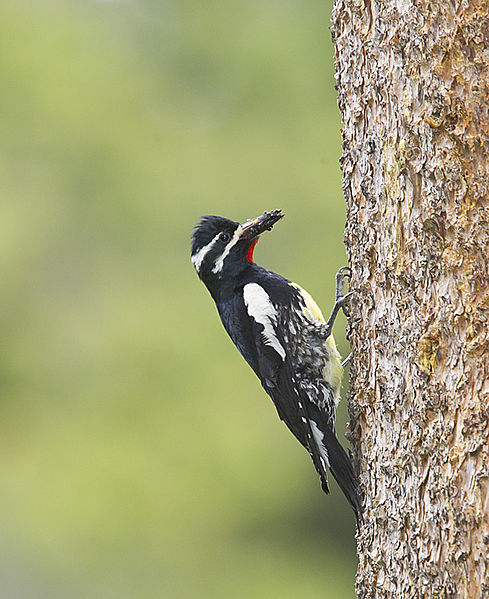
This western sapsucker species can be found in west Texas mountains during the winter, especially the Guadalupe Mountains.
The males look very different from the females, showing solid blacks, whites, and red. The females are a more uniform black and white barring all over.
The two best spots to find this species in Texas are:
- Frijole Ranch at Guadalupe Mountains National Park
- Lawrence E Wood Picnic Area in the Davis Mountains
Red-cockaded Woodpecker
Clues for Identifying:
- Solid white cheek
- Black and white all over
- Restricted to southeast Texas
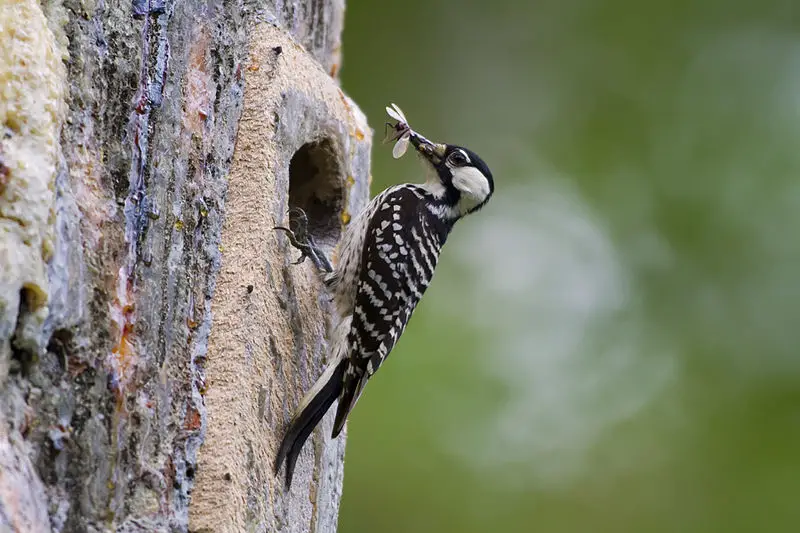
This endangered species lives in mature Longleaf Pine savannas, a very specific habitat that generally only exists in protected areas now, like state and national forests.
Unless you live next door to a protected forest of pine trees north of Houston, you won’t find them at your back yard feeder. Seeing them requires a drive to a known location, with WG Jones State Forest being the most popular.
Breeding season is generally the easiest time to see them, from April to June. Adults will continually return to nesting cavities through the day, making them predictable and easier to observe.
The best spots to see Red-cockaded Woodpecker in Texas are:
- WG Jones State Forest
- SW of Sam Rayburn Lake, near Boykin Spring Rec. Area
- Sam Houston National Forest north of Lake Conroe
Lewis’s Woodpecker
Clues for Identifying:
- Dark red-purple face
- Dark green back

This uniquely colored woodpecker thrives in the large mountain ranges of the western United States, and is only an occasional visitor to Texas. Some winters will bring one or two Lewis’s Woodpeckers somewhere in the state, while other years they’re absent.
Lewis’s Woodpeckers are most often seen in either Guadalupe National Park, the Davis Mountains, or El Paso. Scattered, infrequent sightings also exist throughout the western half of the state.
Red-breasted Sapsucker
Clues for Identifying:
- Solid red head, neck, and breast
- Little to no black on the face

This is a seriously rare bird for Texas, with only 3 historical records. First seen photographed in the Waco area in 1996, this species was originally never expected to appear in the state. They’re normally a west coast species.
In 2005 this species was found again, this time high up in the Davis Mountains.
Multiple hybrids have been found since 2005 (Red-breasted x Red-naped Sapsucker), but purebreds remain incredibly rare and elusive.
If and when this species is found again, it will likely be in either the Davis Mountain or Guadalupe Mountains during winter months.
Ivory-billed Woodpecker
Here it is – the myth, the legend, the extinct bird that some refuse to believe is really gone.
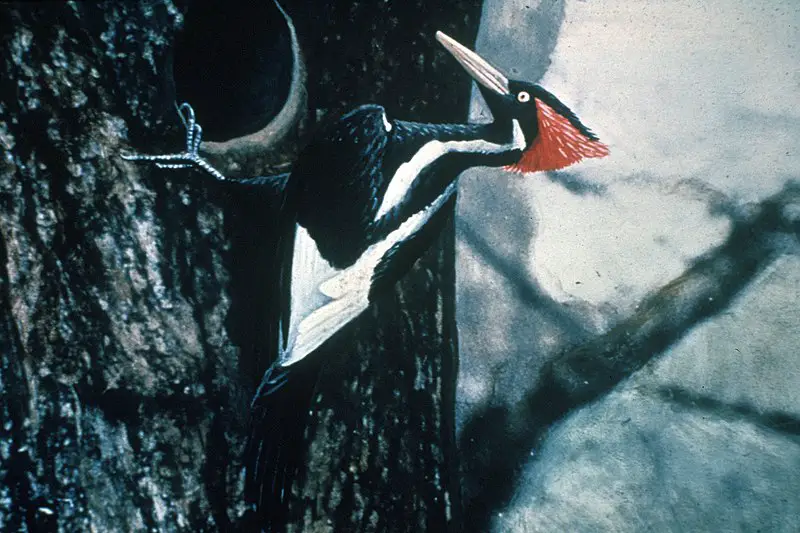
A resident of swampy, lowland forests, the Ivory-billed Woodpecker population was probably never especially large to begin with. Giants of the old American forest, they were larger than Pileated Woodpeckers, and nearly as large as a Red-shouldered Hawk.
When forest clearing in southern states became widespread in the 1800s and early 1900s for farming, ranching, and logging, the large-scale fragmentation of habitat was too much for these giant woodpeckers.
The last confirmed sighting in Texas was in 1913, north of Houston along Spring Creek. The species survived in the U.S. until 1944, and in Cuba until 1986. No confirmable sightings have come forth since those dates.

